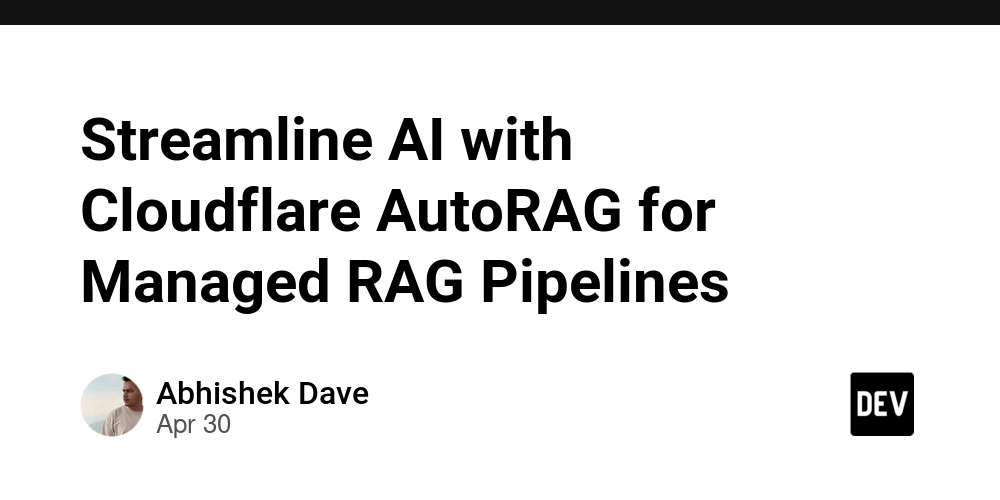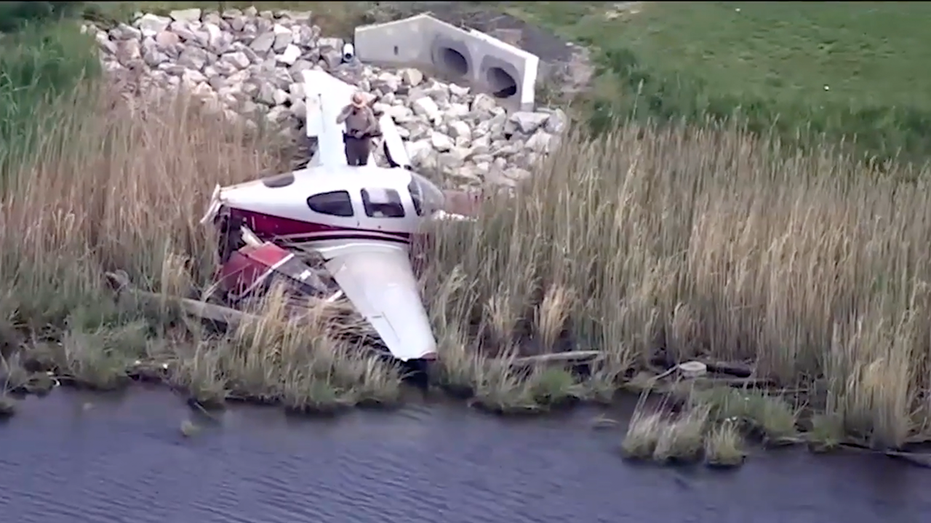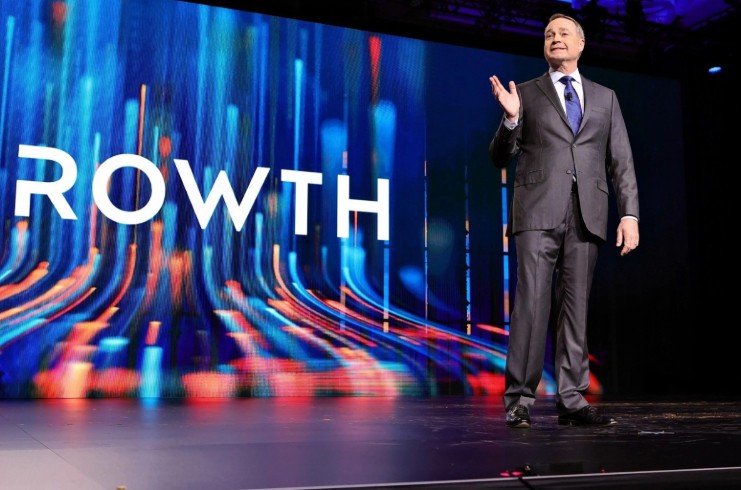Streamline AI with Cloudflare AutoRAG for Managed RAG Pipelines
Originally published at ssojet Cloudflare has introduced AutoRAG, a managed service that facilitates retrieval-augmented generation in large language model (LLM)-based systems. Currently in beta, AutoRAG is designed to simplify the process for developers building pipelines that incorporate rich contextual data into LLMs. Retrieval-augmented generation can greatly enhance the accuracy of LLMs when answering queries related to proprietary or domain-specific knowledge. However, the implementation of such systems can be complex. Cloudflare product manager Anni Wang emphasizes that “building a RAG pipeline is a patchwork of moving parts. You have to stitch together multiple tools and services — your data storage, a vector database, an embedding model, LLMs, and custom indexing, retrieval, and generation logic — all just to get started.” AutoRAG automates the entire retrieval-augmented generation process. It ingests data, chunks and embeds it, stores the vectors in Cloudflare’s Vectorize database, conducts semantic retrieval, and generates responses using Workers AI. The system continuously monitors data sources and reruns the pipeline as necessary. The primary processes behind AutoRAG are indexing and querying. Indexing connects to a data source, ingests, transforms, and vectorizes it using an embeddings model optimized for queries. AutoRAG currently supports only Cloudflare R2-based sources, processing various file types such as PDFs, images, text, HTML, and CSV. All files are converted into structured Markdown, including images through object detection and vision-to-language transformation. For querying, when a user makes a request via the AutoRAG API, the prompt can be rewritten to enhance its effectiveness, vectorized, and used to search the Vectorize database. This returns relevant chunks and metadata that aid in retrieving the original content from the R2 data source. The retrieved context is combined with the user prompt and sent to the LLM. Stratus Cyber CEO Ajay Chandhok noted that “in most cases AutoRAG implementation requires just pointing to an existing R2 bucket. You drop your content in, and the system automatically handles everything else.” BBC senior software engineer Nicholas Griffin added that “it makes querying just a few lines of code.” Despite these advancements, some concerns have been raised. Poojan Dalal pointed out on X that “production grade scalable RAG systems for enterprises have much more requirements and components than just a single pipeline,” indicating that it’s not solely about semantic search. Engineer Pranit Bauva also raised limitations, such as few embedding and chunking options, slow query rewriting, and an AI Gateway that currently only works with Llama models. He emphasized that for AutoRAG to be production-ready, it must provide a method to evaluate whether the correct context was retrieved to adequately answer a given question. Create Fully-Managed RAG Pipelines for AI Applications AutoRAG is now in open beta, making it simpler to create fully-managed retrieval-augmented generation (RAG) pipelines without needing to manage infrastructure. Users can just upload documents to Cloudflare R2, and AutoRAG will manage embeddings, indexing, retrieval, and response generation via API. With AutoRAG, users can customize their pipeline by selecting from Workers AI models, configuring chunking strategies, and editing system prompts. Instant setup allows users to go from zero to a working RAG pipeline in seconds, as AutoRAG provisions everything from Vectorize to pipeline logic. AutoRAG keeps the index fresh by continuously syncing with the data source, ensuring that responses remain accurate and up-to-date. Users can query their data and receive grounded responses through a Workers binding or API. Cloudflare provides a comprehensive guide for users to build their RAG pipeline effectively. For enterprise clients seeking secure user management, SSOJet offers an API-first platform with features like single sign-on (SSO), multi-factor authentication (MFA), and passkey solutions. SSOJet’s platform supports directory sync, SAML, OIDC, and magic link authentication, ensuring a robust framework for authentication and user management. For a streamlined experience in developing your AI applications with secure authentication, explore SSOJet’s offerings at https://ssojet.com.

Originally published at ssojet
Cloudflare has introduced AutoRAG, a managed service that facilitates retrieval-augmented generation in large language model (LLM)-based systems. Currently in beta, AutoRAG is designed to simplify the process for developers building pipelines that incorporate rich contextual data into LLMs.
Retrieval-augmented generation can greatly enhance the accuracy of LLMs when answering queries related to proprietary or domain-specific knowledge. However, the implementation of such systems can be complex. Cloudflare product manager Anni Wang emphasizes that “building a RAG pipeline is a patchwork of moving parts. You have to stitch together multiple tools and services — your data storage, a vector database, an embedding model, LLMs, and custom indexing, retrieval, and generation logic — all just to get started.”
AutoRAG automates the entire retrieval-augmented generation process. It ingests data, chunks and embeds it, stores the vectors in Cloudflare’s Vectorize database, conducts semantic retrieval, and generates responses using Workers AI. The system continuously monitors data sources and reruns the pipeline as necessary.
The primary processes behind AutoRAG are indexing and querying. Indexing connects to a data source, ingests, transforms, and vectorizes it using an embeddings model optimized for queries. AutoRAG currently supports only Cloudflare R2-based sources, processing various file types such as PDFs, images, text, HTML, and CSV. All files are converted into structured Markdown, including images through object detection and vision-to-language transformation.
For querying, when a user makes a request via the AutoRAG API, the prompt can be rewritten to enhance its effectiveness, vectorized, and used to search the Vectorize database. This returns relevant chunks and metadata that aid in retrieving the original content from the R2 data source. The retrieved context is combined with the user prompt and sent to the LLM.
Stratus Cyber CEO Ajay Chandhok noted that “in most cases AutoRAG implementation requires just pointing to an existing R2 bucket. You drop your content in, and the system automatically handles everything else.” BBC senior software engineer Nicholas Griffin added that “it makes querying just a few lines of code.”
Despite these advancements, some concerns have been raised. Poojan Dalal pointed out on X that “production grade scalable RAG systems for enterprises have much more requirements and components than just a single pipeline,” indicating that it’s not solely about semantic search. Engineer Pranit Bauva also raised limitations, such as few embedding and chunking options, slow query rewriting, and an AI Gateway that currently only works with Llama models. He emphasized that for AutoRAG to be production-ready, it must provide a method to evaluate whether the correct context was retrieved to adequately answer a given question.
Create Fully-Managed RAG Pipelines for AI Applications
AutoRAG is now in open beta, making it simpler to create fully-managed retrieval-augmented generation (RAG) pipelines without needing to manage infrastructure. Users can just upload documents to Cloudflare R2, and AutoRAG will manage embeddings, indexing, retrieval, and response generation via API.
With AutoRAG, users can customize their pipeline by selecting from Workers AI models, configuring chunking strategies, and editing system prompts. Instant setup allows users to go from zero to a working RAG pipeline in seconds, as AutoRAG provisions everything from Vectorize to pipeline logic.
AutoRAG keeps the index fresh by continuously syncing with the data source, ensuring that responses remain accurate and up-to-date. Users can query their data and receive grounded responses through a Workers binding or API.
Cloudflare provides a comprehensive guide for users to build their RAG pipeline effectively. For enterprise clients seeking secure user management, SSOJet offers an API-first platform with features like single sign-on (SSO), multi-factor authentication (MFA), and passkey solutions. SSOJet’s platform supports directory sync, SAML, OIDC, and magic link authentication, ensuring a robust framework for authentication and user management.
For a streamlined experience in developing your AI applications with secure authentication, explore SSOJet’s offerings at https://ssojet.com.








































































